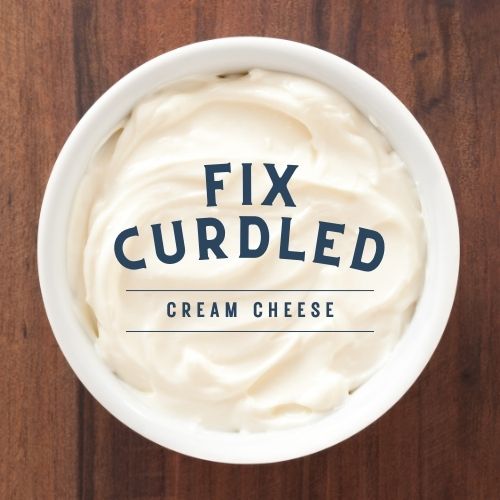Last Updated on May 3, 2023 by Aaron
If you’ve ever made cheesecake, then you know that cream cheese is one of the main ingredients.
And if you’ve ever had cheesecake curdle, then you know that it’s not a pretty sight.
In this blog post, we will explore the causes of cream cheese curdling, and provide some tips on how to fix it.
So don’t worry – even if your cheesecake does end up turning into a big mess, we’ll help you get through it!
Table of Contents
Why cream cheese curdle?
The most common cause of cream cheese curdling is overheating. When the cream cheese reaches a temperature above 160 degrees Fahrenheit, it will start to curdle.
Another common cause of curdled cream cheese is adding too much liquid to the mixture. If there is too much liquid, the proteins in the cream cheese will start to unravel, and it will curdle.
Also, avoid adding acidic ingredients (like lemon juice) to the cream cheese mixture, as this can also cause it to curdle.
The temperature of the cream cheese is also important. If it’s too cold, then your cream cheese won’t melt properly and will curdle or be lumpy. Read more about Cream Cream Lumpy.
How do you fix curdled cream cheese?
If you have added too much liquid, then try adding a few more teaspoons of cream cheese. This will help to balance out the ratio of protein and fat in your mixture. Then you can heat it up. Put the curdled cream cheese in a microwave-safe bowl, and heat it for about 20 seconds.
Be sure to stir it well, so that the cream cheese is evenly distributed.
If the cream cheese has been overheated, then you can try adding some cold cream or milk to the mixture. Mix it in well, and then reheat it in the microwave.
If your cream cheese has been lumpy, then you can try blending it in a food processor or blender. This will help to smooth out any lumps or bumps.
Is it safe to eat curdled cream cheese?
Yes, you can still eat curdled cream cheese. It may not be as smooth and silky as it would have been if you hadn’t overheated or overbeaten your mixture.
It will still taste good, so don’t throw it out!
Just be sure to use it in a recipe that calls for cooked ingredients (like cheesecake), rather than raw cream cheese (such as frosting).
And if you’re using curdled cream cheese in your cheesecake filling, then be sure to bake it for at least 45 minutes. This will help to cook the eggs if any.
How do you keep cream cheese from curdling?
The best way to avoid curdled cream cheese is to be careful not to overheat or add too much liquid to the mixture.
Also, try to avoid adding acidic ingredients to the mixture.
If you’re using a mixer, be sure to mix at a low speed. And if you’re heating your cream cheese on the stovetop, use a double boiler or water bath. This will help to keep the temperature more consistent and prevent it from overheating.
Remember that cream cheese has a higher acidity content and will melt moderately.

